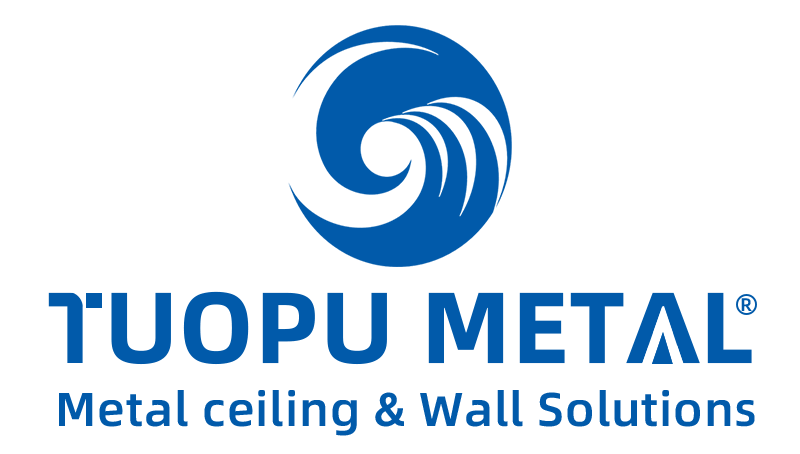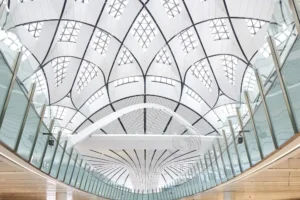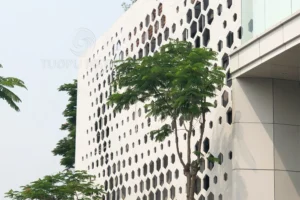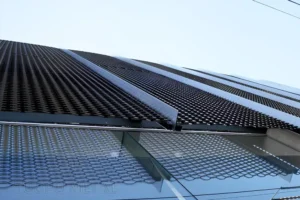Ditching its traditional form, modern buildings are evolving into a more streamlined and sophisticated design. Ladies and gentlemen, welcome to “the aluminum era”.
When designing modern constructions, more and more architects seem to be opting for aluminum cladding. This goes beyond mere aesthetics. It is about finding smart functional materials that live up to bold ideas. From towering commercial skyscrapers to elegant residential houses, aluminum cladding is now the most sought-after form of cladding.
This composite withstands harsh climates easily and has a long life span. Furthermore, it is strong, light, and easy to shape. This makes it suitable for a vast array of projects. Whether you require clean, flat facades or something more intricate and creative with curves and patterns, aluminum cladding makes it all possible.
Aluminum cladding for buildings exteriors is not merely an outer layer, but serves as protection and a design element. For those builders and architects looking for modern reliable solutions, aluminum cladding is the unrivaled option.

What is Aluminium Cladding?
Aluminium cladding describes an outer skin that envelopes a building. It may be supplied in the form of solid panels, mineral composite panels , or even as extruded systems. Each type has its own applications based on the requirements of the project. Aesthetics, strength, and ease of installation are key features of solid panels. Composite panels are also favored because they are light and stable. Greater flexibility in shapes is possible with extruded systems.
Most of the panels are PVDF coated. This improves the durability of the surface and color retention for years. It further enhances the protection that the panels can provide from the sun, rain and pollution.
Unlike the ceiling systems, exterior aluminum cladding systems offer protection to the buildings while improving beauty at the same time carefully maintaining the structure. The systems are suitable for modern tall towers, shopping centers, and homes under construction or renovation. This is the reason why these systems are widely adopted in various construction projects.
10 Reasons Architects Choose Aluminum Cladding
Lightweight Yet Durable
The light weight of aluminum cladding makes it easier to handle and faster to install in comparison to steel or brick, and the added structural load is not an issue. At the same time, it is strong enough to withstand the harsh effects of wind, rain, and sunlight. Because it does not rust or crack easily, buildings are protected without the need for additional structural support. It is for this reason that modern undertakings and high-rise buildings utilize aluminum fitting.
Compliance with Fire Safety Regulations
For high-rise buildings, exterior aluminum cladding complies with stringent fire safety regulations. In order to gain approval, most structures undergo fire performance testing. For this reason, architects tend to favor the combustible mineral core type of aluminum cladding as it makes construction lighter. It significantly reduces the rate of fire propagation as it does not emit smoke while burning; therefore, it contains a high rating of A2-s1, d0. With these properties, it is suitable for use in the construction of offices, giant towers, schools, and hospitals.
Design Flexability is very Important
To create modern 3D facades, architects have used aluminum cladding because it can be cut, bent, and shaped into almost any form like Curves, patterns, and even perforated designs. It also comes in many colors and finishes. Some are smooth and modern while others mimic wood, stone, or even brushed metal. With these many options, designers can transform simple buildings into bold and sculptural masterpieces.
Low Maintenance & Longevity
Exterior aluminum cladding requires minimal upkeep over decades. It does not rot like wood or crack like stone. It does not fade quickly in the sun either. Most panels have a PVDF coating that protects the surface. This means the color stays strong and the panel stays smooth. You only need to clean it once in a while. No repainting or sealing is needed. Over time, this saves both effort and money.
Sustainable and Recyclable
Used as building facades, aluminum panels aid in obtaining LEED green building certifications. Moreover, the panels are fully recyclable. They can be repurposed without degradation in quality. These factors work towards reducing the carbon footprint of many construction projects. Aluminum also has considered lower energy production expenditure in comparison to other metals. For these reasons, builders trying to achieve LEED or BREEAM standards prefer using aluminum. This enables them to improve construction practices while protecting the environment.
Weatherproof Performance
Sydney or Miami boast class A humid climates, and exterior aluminum cladding works well there. It also holds up well in areas with abundant rains or salt air. The coating safeguards it against water incursion, mold, and rot, which makes it ideal for coastal buildings or tropical regions. Architects in these areas put their faith in aluminum knowing full well that the metal has to contend with severe weather year-round.
Cost-Effective Over Time
Aluminum cladding lessens long-term repair costs. Its initial expenditure is higher than some materials, but the value increase over time is significant. There is minimal spending on upkeep and repairs, and it can sit without a full replacement for decades. Problems like leaks, cracks, and fading are much fewer and this adds value for building owners and contractors.
Ease of Installation
Set designs of buildings can be achieved with the use of prefabricated materials. The panels of the cladding are pre-made to the correct measurements and prefabricated aluminum adds to simplicity. This cuts down on labor time and reduces the chances of mistakes. Custom shapes are easier to complete without having to use additional welding and cutting on site which helps for projects with strict deadlines.
Aesthetic Versatility
Exterior aluminum cladding mimics luxury materials at a fraction of the cost. Some finishes look like real wood, stone, or copper. Others shine like metal or have a matte, soft touch. This gives designers many choices without using expensive or heavy materials. The building gets a high-end look without the high-end price. Clients like it because it looks impressive and saves money.
Compatibility with Smart Building Tech
Aluminum cladding supports energy-efficient building envelopes. It works well with insulation systems, solar panels, and smart sensors. The cladding helps trap heat in cold places and reflect sun in hot places. It creates a better outer shell for the whole building. This helps lower energy bills and makes the space more comfortable. Builders who focus on green or smart design often include aluminum in their plans.
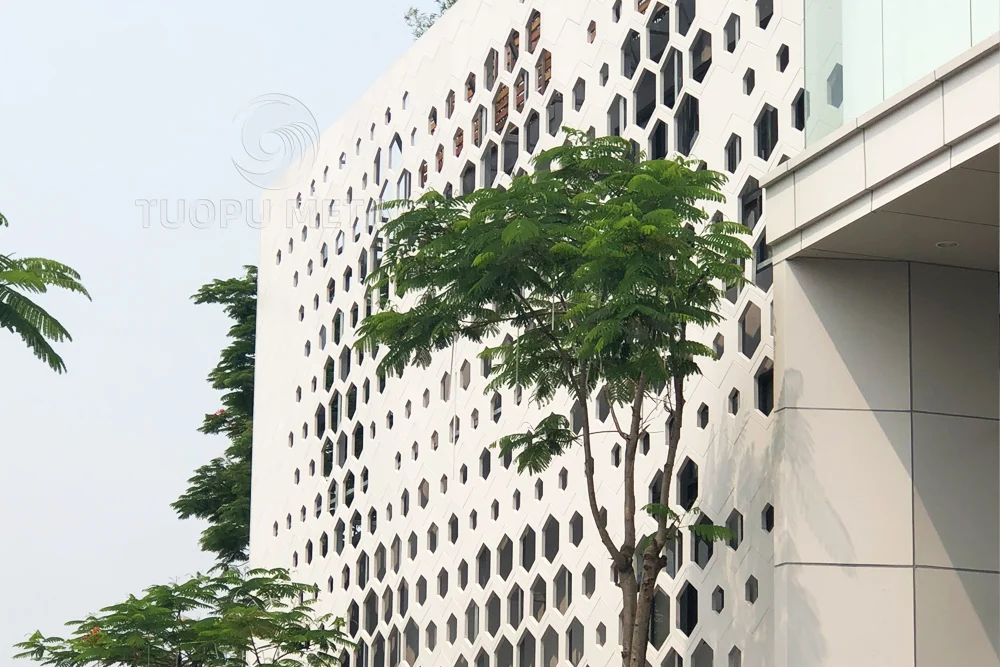
Case Studies
Sydney High-Rise: One Central Park
One Central Park in Sydney is not just a green building with plants hanging off the sides. It’s also a smart example of how exterior aluminum cladding systems are designed to protect buildings while enhancing aesthetics. This tower sits close to the coast. That means it gets plenty of wind, rain, and salty air. But the aluminum cladding on this high-rise holds up well. It doesn’t rust. It doesn’t fade. It keeps the building looking sharp. The architects picked it because aluminum cladding withstands harsh weather without added structural load. They also liked how easy it was to shape and install. In a wet, humid climate like Sydney, the material performs exactly the way it should—strong, reliable, and low maintenance.
London Office Tower: The Scalpel
In the heart of London, The Scalpel cuts through the skyline with bold angles and reflective surfaces. This office tower is home to many financial companies. They wanted a look that matched their brand—clean, sharp, and professional. So the designers used custom-colored aluminum cladding to give the building a strong identity. It wasn’t just about looks. The material also had to meet strict fire safety rules. Exterior aluminum cladding meets strict fire codes for high-rises, which made it a good choice. The finish holds color well, even in the gray London weather. This project shows how architects use aluminum cladding to achieve futuristic 3D facades while staying compliant and practical.
Conclusion
Architects today want building materials that do more than just look good. They need something safe. They need something that lasts. They also want a design that stands out. Exterior aluminum cladding systems offer all three. The panels stay strong in bad weather. They meet fire codes. They give buildings a clean, modern style. On top of that, they help with green building goals and cost savings over time.
If you’re planning a new project, aluminum cladding could be the smart choice.
Download our free design guide to get started.
Contact our team for a custom quote on exterior aluminum cladding solutions.
